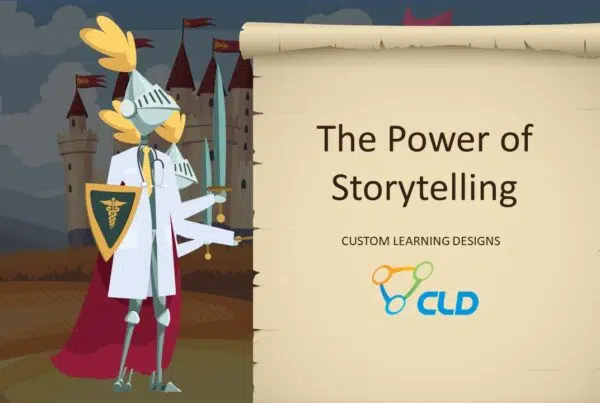2020 didn’t bring digital transformation for trainers. It brought digital survival.
There wasn’t any time to implement best practices in the lockdown haze. You were booked solid with conference calls. And, when you weren’t on a call, you were battling Zoom fatigue.
As 2020 wraps up, let’s take a bit of time to reflect on some of the ways sales training has changed this year.
The New Training Landscape
All the statistics point to one immutable fact — remote learning is here to stay.
When surveyed by training expert, Cindy Huggett, 90% of organizations reported using more virtual instructor-led training. Even more importantly, companies across the board are investing in remote learning. Training Magazine’s annual survey found an 18% drop in the training payroll, but a rise in the purchase of products and services.
Where does sales training fit in this new landscape?
Currently, Training Magazine reports only 36% of sales training happens virtually. As more organizations purchase learning technology, the future of sales training just might be virtual instructor-led training.
Even more importantly, at Custom Learning Designs (CLD), we’ve seen our clients get great results with virtual instructor-led training. Plus, everyone wants to minimize the time away from the field.
“A new drug launch will still benefit from the excitement of a live meeting with all the “extras” that go into launch meetings,” says Lyndsey Ladd, a CLD workshop writer. “However, a POA that is more strategy-focused is likely just as effective being conducted virtually without taking reps out of the field for full days at a time.”
“A new drug launch will still benefit from the excitement of a live meeting with all the “extras” that go into launch meetings. However, a POA that is more strategy-focused is likely just as effective being conducted virtually without taking reps out of the field for full days at a time.”
Lyndsey LaddWorkshop Writer
Virtual instructor-led training
Percentage of organizations reported using more virtual instructor-led training.
Drop in Training Payroll
Training Magazine’s annual survey found an 18% drop in the training payroll, but a rise in the purchase of products and services.
Training that Happens Virtually
Training Magazine reports that only 36% of sales training happens virtually.
New Trends in Virtual Instructor-Led Training
We talked to expert Cindy Huggett, author of Virtual Training Basics, about what’s changed for virtual instructor-led training in 2020 and what’s stayed the same. To get this up-to-date information, she conducts an annual survey called The State of Virtual Training 2020.
“The virtual classroom isn’t going away! As organizations realize that interactive live online learning can be just as effective as in-person learning, it will stay on the menu as a learning option,” says Huggett.
Huggett has one warning for virtual trainers, though: “The key for effectiveness is that it must be intentionally designed for interaction, have an engaging facilitator, and prepared participants.”
What’s changed according to Huggett’s survey results?
- 2020 was the year of video. 83% of facilitators and 55% of participants reported using webcams.
- Zoom won the most popular platform award at 50% usage, up from 30% in 2019.
- 7% of participants were incorporating new technologies like virtual reality and augmented reality.
Facilitators Using Webcams
Percentage of facilitators reporting using webcams in 2020.
Zoom Versus All Others
Zoom won the most popular platform award at 50% usage, up from 30% in 2019.
Facilitators using producers
Nearly 50% of facilitators use a producer all the time, while roughly 25% do not.
What’s stayed the same in The State of Virtual Training 2020?
- 60 minutes was the most common length for virtual training courses.
- Top challenges remain the same — technology difficulties and learner engagement.
- Nearly 50% of facilitators use a producer all the time, while roughly 25% never use one.
What will the future bring?
Organizations continue to buy new learning technologies. Now, they can add shopping for cool new tools for virtual instructor-led training to the list. In the future, virtual instructor-led training won’t be a substitute for a classroom. It’ll be an immersive virtual experience.
“We’ll see more robust platform tools — beyond just the standard polling, chatting, and whiteboarding,” says Huggett. “From more collaboration-based whiteboards to incorporating augmented reality elements into the learning.”
Don’t Miss Another Blog. Subscribe Today.
At CLD, we’ve also seen the opposite trend. Virtual training has made it so easy to bring teams together that non-trainers are leading the charge. Often field managers lead workshops on strategizing and selling in the “new normal.” They need virtual selling application workshops designed for inexperienced trainers.
“I am hearing a lot from clients that ‘easy’ is okay when it comes to virtual workshops,” says Billy Kulovitz, CLD Account Executive. “Clients don’t want that added level of stress—especially when these are field manager led.”
“I am hearing a lot from clients that ‘easy’ is okay when it comes to virtual workshops, Clients don’t want that added level of stress—especially when these are field manager led.”
Billy KulovitzAE
The future probably holds both types of virtual training. Big launches will have all the bells and whistles of immersive virtual training experiences. However, the ease of virtual training will also lead to non-trainers like managers leading workshops more frequently.
Tips and Tricks for Life Science Sales Trainers
At CLD, we’ve been designing virtual training for years. Through this experience, we’ve learned and adapted industry best practices to fit the life sciences.
“Every client started off with different comfort levels with deploying virtual training,” says CLD workshop writer, Lyndsey Ladd. “We determine what the client’s goals are, what their comfort level is with the technology, and how we can meet their goals in a virtual environment.”
“One extra nuance for sales trainers is their audience — busy professionals with competing priorities who may (or may not) place value on learning,” says Huggett. “Sales trainers need to recognize the reality of their learner situations and place extra emphasis on the benefits and value of this learning.”
2020 brought an abrupt shift in training methods. Luckily, virtual instructor-led training can and delivers fantastic results. As we enter 2021, we need to decide what new habits we’d like to keep. At CLD, we’re betting that our clients will choose to add virtual instructor-led training to their programs more often.





